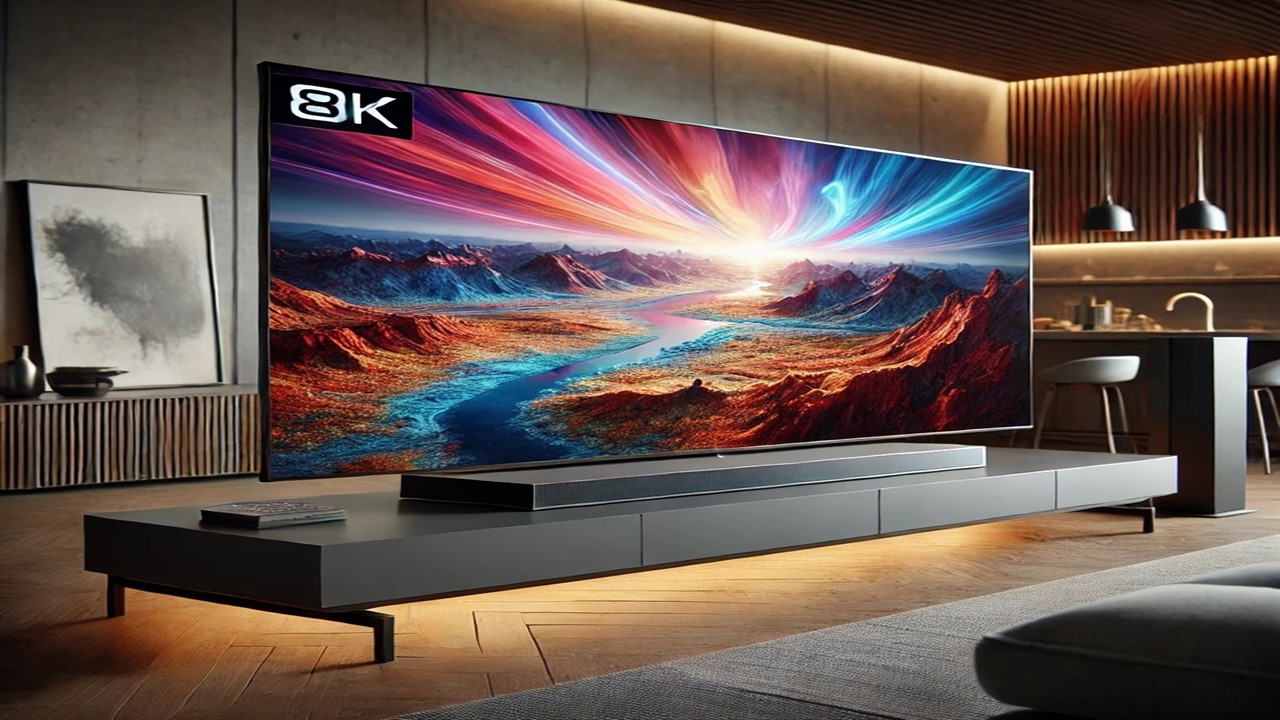
Introduction
When we sit in front of our television screens, we are not just looking at a medium of entertainment; we are stepping into a world filled with technology and innovation. In recent years, television technology has undergone unprecedented changes. Smart TVs, 4K, 8K, OLED, and now MicroLED and MiniLED technologies are providing us with a unique viewing experience. But that’s not all. The future of television holds many more exciting technologies.
Do you know how these new technologies can change our viewing experience? Which companies are leading in this field, and what are their plans for the future? Let’s dive deep into all these aspects in this article.
1. New Technologies: MicroLED and MiniLED
MicroLED
MicroLED is the latest display technology that utilizes tiny LED pixels. This technology provides better color and contrast than LCD and OLED. In MicroLED, each pixel can be controlled independently, resulting in deeper blacks and bright colors with exceptional clarity. This technology is known for its high-quality images.
Samsung has introduced this technology in its The Wall TV, which is available in large sizes and offers an immersive experience to users. The benefits of MicroLED include:
- Exceptional Contrast and Color: Each pixel is controlled independently, delivering deeper blacks and brighter colors with more vibrant images.
- Energy Efficiency: MicroLED technology reduces energy consumption.
- Longevity: This technology is more durable than OLED, extending the lifespan of the device.
MiniLED
MiniLED technology is designed to enhance LCD displays. It uses thousands of small LED pixels, improving backlighting. The advantage is that it enhances image clarity and depth.
Companies like LG and Sony are incorporating MiniLED technology into their premium models. The key benefits of MiniLED technology include:
- High Contrast Ratio: MiniLED improves black levels, resulting in enhanced image quality.
- Fine Tuning: This technology uses local dimming zones, adding more richness to colors.
- Cost-Effective Option: MiniLED TVs are available at a lower cost compared to OLED, making them more accessible to a wider audience.
2. Smart TVs and AI Integration
AI and Smart Technology
The integration of artificial intelligence in new television technology is underway. Smart TVs come with voice control, custom content recommendations, and even the ability to take actions. As soon as you turn on the TV, it suggests shows based on your viewing habits.
Google TV and Amazon Fire TV are leaders in this space. Google TV aggregates content from various streaming services, making it easy for users to find what they want to watch. Additionally, the voice command feature allows you to easily search for your favorite shows or movies.
Smart Home Integration
Smart TVs can also be connected with other smart home devices. You can control smart lights, thermostats, and other gadgets through your TV. In this way, the TV becomes a central part of your smart home rather than just a medium for watching.
3. Immersive Viewing Experience
3D and VR
Companies are experimenting with 3D and virtual reality (VR) to provide viewers with an immersive experience. Imagine sitting in your living room and experiencing a live cricket match as if you were in the stadium!
Sony and LG are planning to incorporate this technology into their new models. With VR technology, users can watch their favorite movies or shows in a 360-degree format.
Audio Technology
Not only visuals but audio also plays a crucial role. Companies are using technologies like Dolby Atmos and DTS
, providing users with an outstanding sound experience. This technology makes users feel as if they are in a movie theater, where sound comes from all directions.
4. Key Companies
Samsung
Samsung is a leader in MicroLED technology. They are promoting high quality and innovation through their QLED TVs. Samsung’s future plan is to launch 8K resolution and large screen sizes. Additionally, they are focusing on smart home integration so that their TVs can connect with other smart devices.
LG
LG is well-known for its OLED technology and is now focusing on MicroLED and MiniLED. Their goal is to improve performance and energy efficiency. LG is planning to introduce 8K OLED TVs in the coming years, featuring enhanced customization options.
Sony
Sony has included MiniLED technology in its BRAVIA TVs. Their goal is to provide users with a unique experience with 8K resolution and better image processing. Sony is also improving audio technology for a better sound quality experience.
5. Market Demand and Future Technologies
Global Demand
Currently, the global television market is valued at approximately $240 billion. This market’s growth is primarily due to the increasing demand for smart TVs, 4K, and 8K technologies.
In particular, the demand for MicroLED and OLED TVs is rising as consumers are seeking high-quality visual experiences.
Future Technologies
In the coming years, the following technologies are expected to see increased demand:
- 8K and 16K Resolution: Consumers are looking for the highest quality images. The development of 8K and 16K resolution TVs continues, which will provide better viewing experiences.
- Interactive TVs: As VR and AR technologies evolve, users are expecting more interactive experiences.
- Cloud Gaming: Televisions are also being used for gaming, and the demand for cloud gaming is increasing, offering high-graphics gaming experiences.
- Energy-Efficient Technology: Due to improved energy efficiency and environmental concerns, companies are developing products that consume less energy.
Television technology is rapidly changing, and major companies are working to enhance customer experiences by adopting new technologies. With innovations like MicroLED, MiniLED, and AI-integrated smart TVs, we are on the brink of a new era. Are you ready to be a part of this new television revolution? Now is the right time to elevate your TV experience!
Prepare to step into this new technological world, as television has become more than just a medium for viewing; it has become an experience. In the future, balancing technology and consumer preferences will be essential to provide better experiences for consumers.


































































